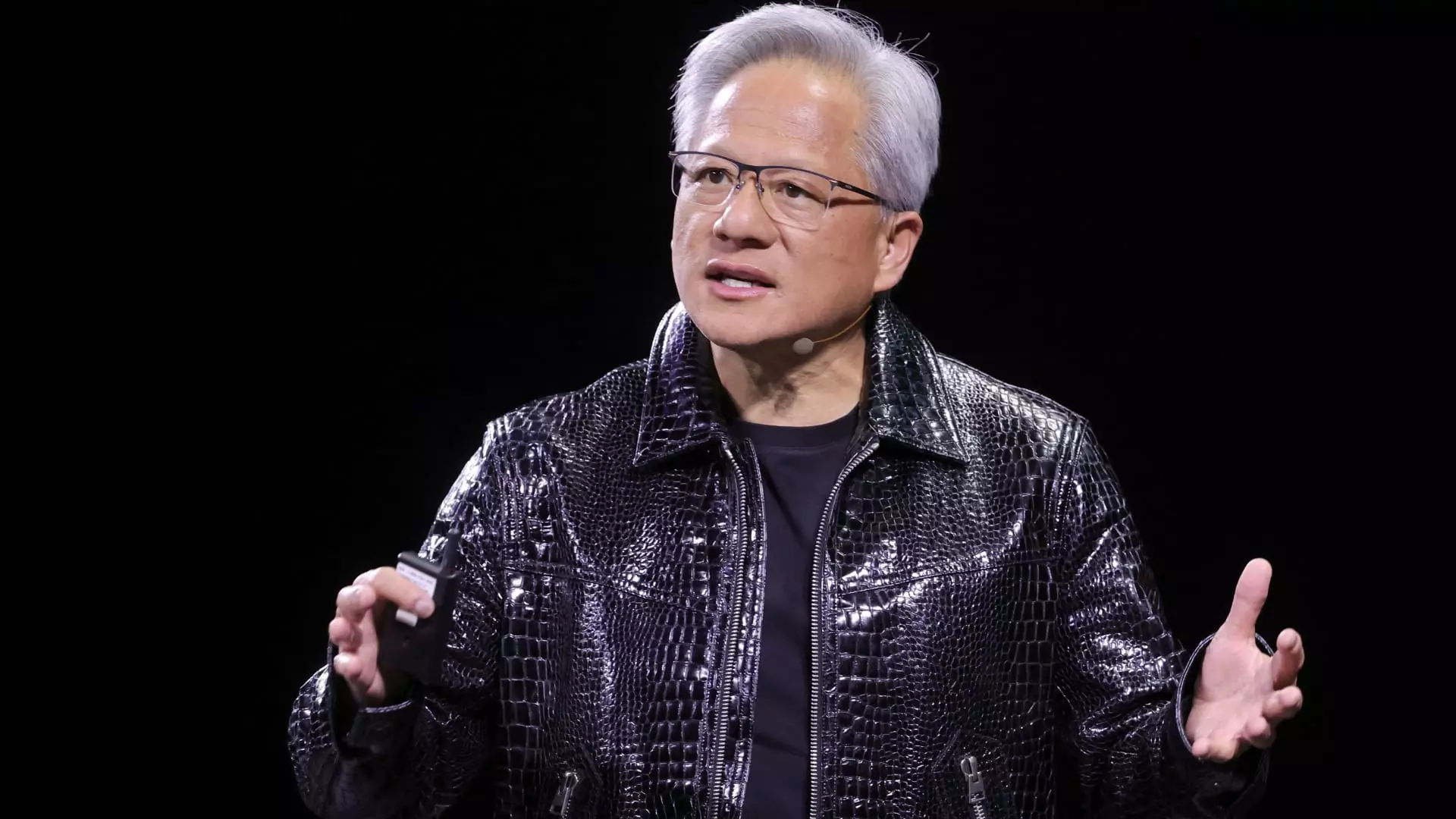Jensen Huang, the astute CEO of Nvidia, recently attempted to reshape the narrative surrounding quantum computing at his company’s inaugural “Quantum Day.” This ambitious gala was likely intended not only to clarify past comments but to galvanize investor confidence in a notoriously volatile sector. Unfortunately, his efforts seem to have backfired, as evidenced by the worrisome declines of key quantum stocks following his address. Huang’s attempt to walk back his earlier timeline—suggesting that useful quantum technology was at least 15 years away—unexpectedly reignited fears. Instead of instilling hope, he may have stoked the fire of skepticism that investors have harbored toward quantum technologies.
The crux of the issue lies in the expectations that Huang himself set. By asserting that quantum computing may require an even longer gestation period of around 20 years, he inadvertently communicated a rather bleak outlook. Investors have already watched quantum stocks fluctuate dramatically, and his retrospective admission left them questioning whether they had miscalculated the risk versus reward in their investments. The notion that quantum technologies will not replace classical systems but instead work in concert with them is promising; however, it raises an important point—are we placing undue faith in a nebulous concept while overlooking tangible advancements in classical computing?
The Reality Check on Quantum Investments
Huang claims that quantum computing could hold extraordinary potential, but the persistent and dramatic sell-offs in the stocks of companies like D-Wave, IonQ, and Rigetti suggest that investors aren’t persuaded. During his speech, Huang noted that labeling quantum computing merely as “a computer” creates unrealistic expectations, which is a fair point; however, it seems disingenuous to rely on vague, aspirational statements without concrete timelines or deliverables. This ambiguity conflates the revolutionary promise of quantum technology with the rapid, robust advances already seen in classical computing, causing investors to reassess their stakes in an industry that still bears the brunt of skepticism.
Moreover, why should investors feel optimistic about an industry that seems as muddled in presentation as it is in execution? Huang’s strategies for integration, such as creating a research center in Boston that partners with elite institutions like MIT and Harvard, may sound impressive on paper. Still, the practical implications remain uncertain. Does this collaboration guarantee breakthroughs, or is it merely a shiny façade to attract attention in a crowded market? As the CEO of a company that has thrived on solid fundamentals and innovation, Huang’s performance at Quantum Day prompted a sobering realization: the quantum sector, while full of promise, remains an erratic gamble at best.
A Call for Strategic Clarity
Another salient issue is Huang’s apparent misalignment with the broader industry’s sentiments about quantum computing. While he believes that companies should embrace the concept as an augmentation to existing technologies, many in the field may feel that this undercut’s quantum’s revolutionary promise. One might argue that, rather than ushering in a new era of computing, quantum technology risks being relegated to a niche application—albeit a fascinating one. Huang’s attempt to soften the narrative instead underscores the hurdles that remain.
The message appears muddled: Are we looking at a futuristic marvel or merely a costly tool? The industry’s branding indeed sits at a pivotal crossroads, conflating terms like “quantum computing” with robust capabilities while losing sight of the cautious realism that investors crave. It’s clear that Huang could have taken a more pragmatic route by not just acknowledging the technological grace periods but by fortifying them with actionable insights.
The Tangible versus the Abstract
Moreover, quantum computing’s dichotomy—as a phenomenon that may one day revolutionize the sector while remaining out of reach today—highlights the challenges that Nvidia faces. While Huang’s insights about marketing quantum as a supportive tool were spot-on, they lack the pulling power needed to invigorate a malaise-ridden sector. By distancing himself from the bold claims that had initially fueled investors’ interest, he might have inadvertently opened the floodgates for further disillusionment.
Huang’s Quantum Day might be emblematic of the broader issues facing radical technological advancements. Instead of instilling confidence, the event appeared to underscore the industry’s inherent insecurity and the chasm between hopes and reality in the quantum realm. The stock market’s immediate reaction—dwindling sentiment among investors—indicates a relegation of the quantum hype to mere speculation rather than tangible progress. As such, the expectations of quantum computing might need recalibration, nudging it toward a more grounded reality that can ultimately support its long-term growth.

